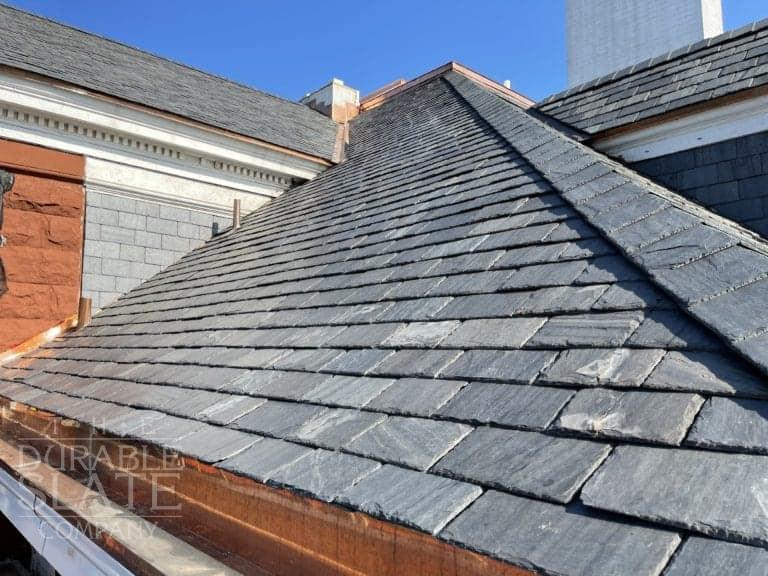Finest Practices for Ensuring Proper Roofing Ventilation
Ensuring correct roof covering ventilation is critical for the longevity and performance of a roof. A balanced intake and exhaust air vent proportion, frequently 1:300, plays a crucial function, with consumption vents preferably put at the reduced edge of the roof for trendy air entry and exhaust vents at the peak for cozy air leave. Normal examinations to identify obstructions and maintain clear air movement are critical. Moreover, maintaining insulation far from vents is vital to protect against airflow limitation. Understanding these foundational aspects establishes the phase for more comprehensive insights into installment and upkeep practices that can considerably enhance your roof covering system's efficiency.
Understand Ventilation Essentials
Correctly recognizing air flow fundamentals is important for making sure the durability and efficiency of roofing systems. Efficient air flow reduces dampness accumulation and temperature level extremes in the attic, both of which can lead to considerable structural damage in time. A well-ventilated roof helps in stopping common issues such as mold development, timber rot, and ice dams, which can compromise the honesty of the roof products and the underlying frameworks.
The key objective of air flow is to facilitate the motion of air, enabling a constant exchange between the outdoor and indoor atmospheres. This balance is achieved through a mix of consumption and exhaust vents that interact to preserve ideal airflow. Intake vents, generally situated along the soffits or eaves, enable fresh air to go into the attic room space, while exhaust vents, often located at or near the roofing ridge, make it possible for warm, humid air to run away.
Trick aspects affecting the performance of roofing air flow include appropriate positioning, appropriate sizing, and ensuring that both intake and exhaust vents are unhampered. Routine examination and upkeep are vital to recognize potential blockages, damages, or ineffectiveness in the ventilation system, therefore guarding the roofing system's performance and resilience.
Kinds of Roofing Vents
Roofing vents play an essential role in maintaining reliable attic air flow and, by extension, the overall health and wellness of the roof covering system. Various types of roofing vents are offered, each with one-of-a-kind advantages customized to particular roofing requirements.

Soffit vents are installed under the eaves and operate in tandem with roofing system vents to make sure a well balanced intake and exhaust system. By enabling cooler air to get in from below, soffit vents facilitate the expulsion of hot air with top vents. Gable vents, located on the exterior wall surfaces of the attic, deal an additional reliable remedy, particularly in homes with gable roofings.
Examine Your Current Air Flow

Following, consider the age and condition of your roof products and ventilation elements. Older systems may not adhere to current building ordinance or may have degraded in time, lowering their efficiency. Conduct a complete assessment to recognize any kind of indicators of wear and tear, such as corrosion, damage, or gaps that can endanger the system's efficiency.
Furthermore, gauge the attic temperature level and humidity levels. High temperature levels and humidity can suggest insufficient air flow.
Installation Best Practices
Effective installment of roof ventilation systems is vital for ensuring ideal efficiency and long life. Proper installation starts with recognizing the certain ventilation needs of the roofing and the building it covers. This involves computing the appropriate ratio of consumption to wear down vents, typically adhering to the 1:300 regulation, which stipulates one square foot of ventilation for every single 300 square feet of attic flooring room.

Consumption vents need to be mounted at the roofing's reduced edge, often in the soffits, to allow amazing air to get in. Exhaust vents, on the browse around this web-site various other hand, should be mounted check my blog near or at the roofing's top to facilitate the exit of cozy, wet air.
Seal all vent connections meticulously to stop air leakages and potential water infiltration. Use top quality products and comply with producer standards to make certain longevity and performance. In addition, integrating ridge vents with baffles can significantly improve air flow efficiency by protecting against wind-driven rainfall and snow from entering the attic room.
Eventually, specific installment of roof covering ventilation systems reduces potential concerns such as mold and mildew development, ice dams, and structural damages, ensuring the roofing system's integrity and the building's general health.
Normal Maintenance Tips
Uniformity in upkeep methods is basic to guaranteeing the long-lasting efficiency of roof covering air flow systems. Throughout these assessments, make certain that vents are totally free of debris, nests, and various other blockages that can hinder airflow.
Cleaning the vents is another important job. Make use of a soft brush or a vacuum cleaner to get rid of dirt and particles from consumption and exhaust vents. Be cautious not to damage the vent screens or louvers throughout the process. In addition, evaluate the attic room for any type of indicators of water damages, which might jeopardize the integrity of the roof.
Correct insulation is similarly crucial. Make sure that attic insulation does not obstruct the vents, as this can significantly restrict air movement. If any type of insulation has actually moved or cleared up, rearrange or replace it to keep an efficient obstacle.
Last but not least, replace any harmed or missing out on components promptly. Damaged vents, cracked tiles, or worn-out blinking can all add to poor ventilation and find out here now needs to be dealt with right away. Regular upkeep makes sure that the roofing air flow system works optimally, consequently expanding the life-span of the roof covering itself.
Conclusion
Making sure correct roofing ventilation is extremely important for maintaining the efficiency and toughness of a roof. Adherence to the 1:300 intake and exhaust air vent ratio, paired with the strategic positioning of vents, is crucial. Routine biannual assessments, debris cleaning, and making certain insulation does not block air movement are crucial techniques. Implementing these ideal methods will certainly cultivate a well-ventilated roof, thereby mitigating prospective issues associated with moisture accumulation and too much heat, eventually lengthening the roof covering's lifespan.
A well balanced consumption and exhaust vent proportion, typically 1:300, plays a crucial role, with consumption vents preferably placed at the lower side of the roofing for cool air access and exhaust vents at the top for cozy air exit. Intake vents, generally located along the eaves or soffits, allow fresh air to enter the attic room area, while exhaust vents, often located at or near the roofing ridge, allow hot, moist air to escape.
Soffit vents are mounted under the eaves and work in tandem with roof covering vents to guarantee a well balanced consumption and exhaust system. By enabling cooler air to get in from below, soffit vents promote the expulsion of warm air with top vents. Adherence to the 1:300 consumption and exhaust vent ratio, combined with the critical placement of vents, is important.